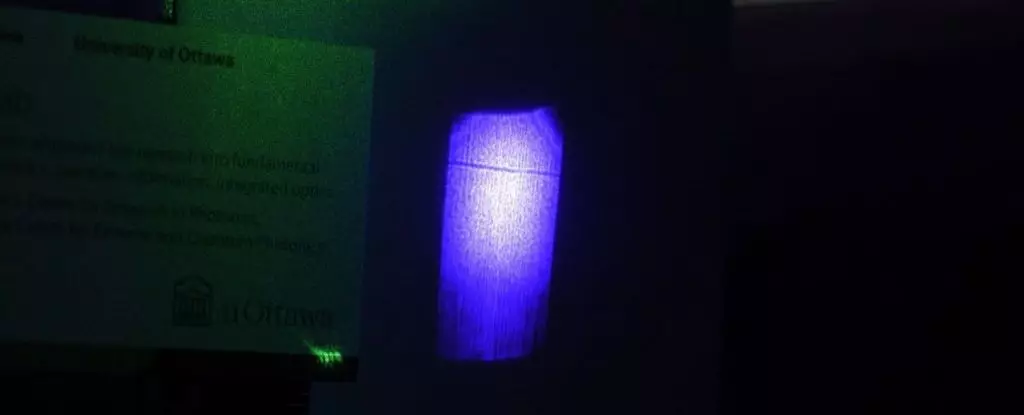Shadows typically evoke familiar images of obstructions in illuminated spaces. When light photons encounter an opaque object, the result is a shadow—an area where light has been hindered. Yet, physicists have uncovered a fascinating anomaly: a laser beam can induce a shadow effect in its medium under specific conditions. This discovery challenges traditional notions of shadows and beckons a deeper exploration into the nuances of light interactions.
The conventional understanding of how light behaves relies heavily on the principle that, generally, photons do not interact with each other. Two intersecting beams of light can pass through one another without interference, akin to flashlights cutting through the darkness without impeding each other’s path. However, researchers like Raphael Abrahão of Brookhaven National Laboratory have presented evidence of laser beams acting counterintuitively—they can “cast shadows” within transparent media when crossed precisely.
In a groundbreaking experiment, Abrahão and his team utilized a nonlinear optical material, behaving unpredictably when it interacts with light. Their exploration began with curiosity during discussions about light interaction properties, leading them to conduct an experiment examining the intriguing possibility of a light-generated shadow. The foundation for this article lies in their discovery—a revelation poised to redefine our understanding of both light and shadow.
The experiment primarily involved a ruby, a conventional choice for studying nonlinear optics. The team directed a blue laser beam through the ruby, igniting its components into a luminescent glow. A secondary, perpendicular green laser intermingled with the blue, providing the necessary disruption to witness the shadow phenomenon. Within the ruby’s molecular framework, a complex interplay of electrons arose, influenced by the distinct wavelengths of both laser beams.
As the green beam coursed through the ruby, it affected the behavior of the shorter-wavelength blue light. This interaction produced an observable darkness—an area appearing as a shadow against the glow of the blue beam on a screen positioned behind the ruby. Fascinatingly, this shadow conformed to the characteristics of traditional shadows: it was visible, followed the contours of the screen, and responded dynamically to adjustments in the green laser’s position.
The implications of this research extend far beyond mere visual stimuli. Abrahão’s statement encapsulates the essence of the findings: “This discovery expands our understanding of light-matter interactions.” By redefining the relationship between shadows and light, this study opens up new avenues for technological advancements. The optical effects seen in nonlinear materials could lead to miraculous innovations in fields ranging from telecommunications to medical imaging.
For instance, harnessing the ability of laser shadows could enhance optical devices and improve light modulation techniques, presenting unprecedented methods for manipulating light with precision across various applications. As researchers continue to unravel the intricacies of shadow formation at a photonic level, the potential breakthroughs may very well redefine our technological landscape.
Our journey into the realm of light and shadows reveals an evolving understanding—one that most certainly will expand as scientific inquiry continues. The exploration initiated by Abrahão and collaborators propels the discourse surrounding optics forward, illustrating that even fundamental concepts such as shadow can be redefined through rigorous inquiry and innovative experimentation. This study is a testament to the ever-changing landscape of physics, inviting future researchers to further question and explore the rich interplay between light and matter. As our understanding deepens, so does our recognition of the extraordinary phenomena that illuminate our universe.


Leave a Reply